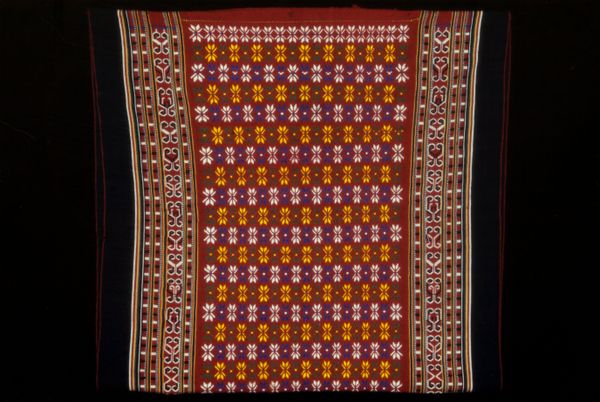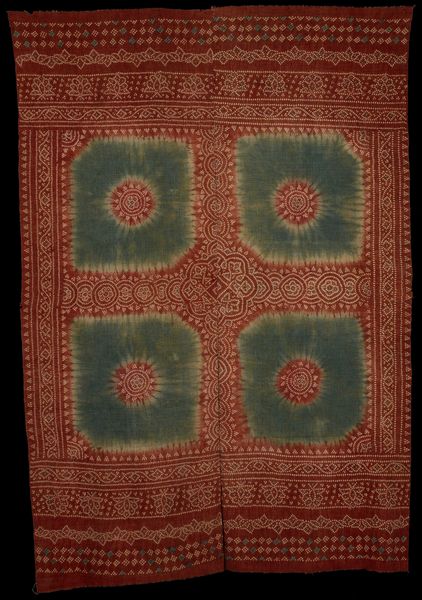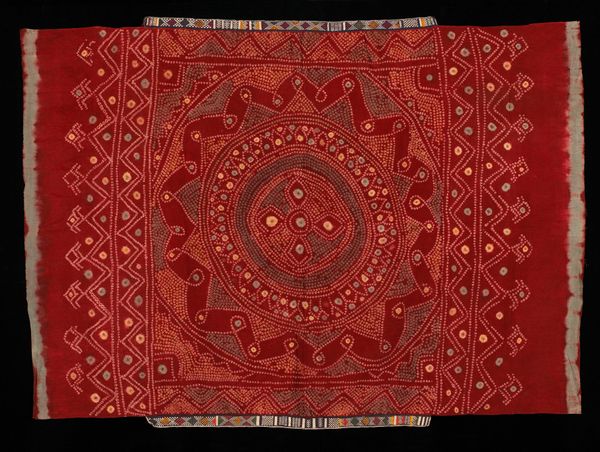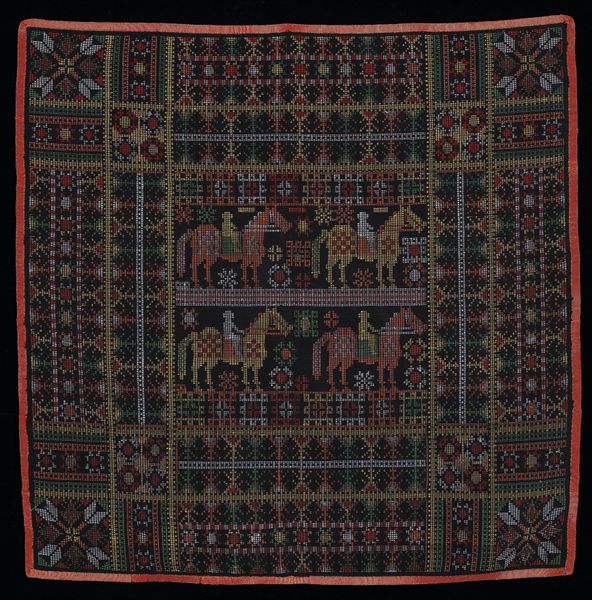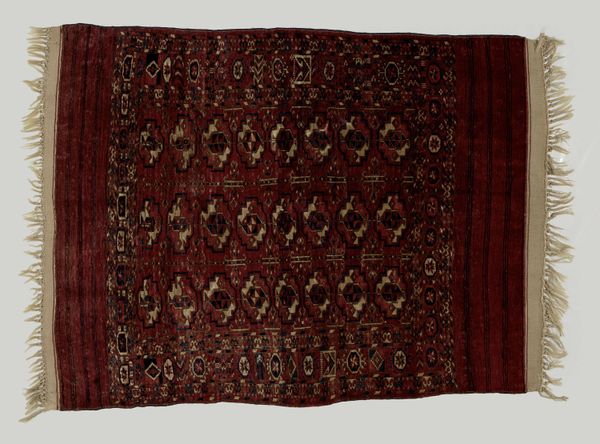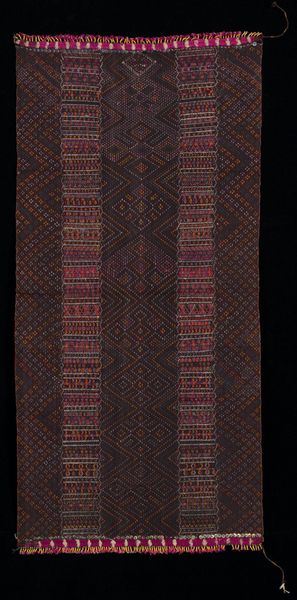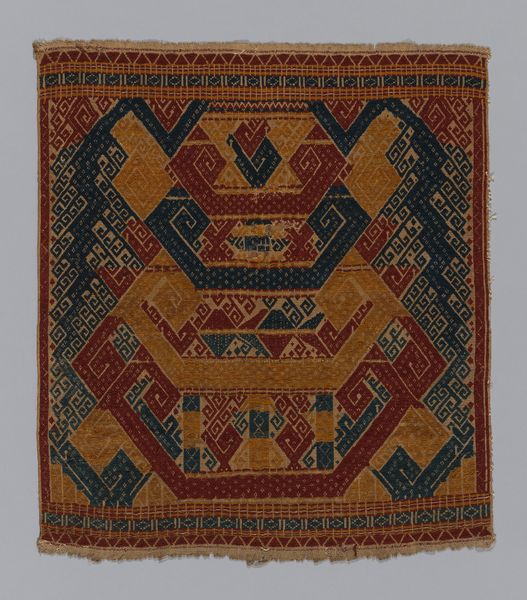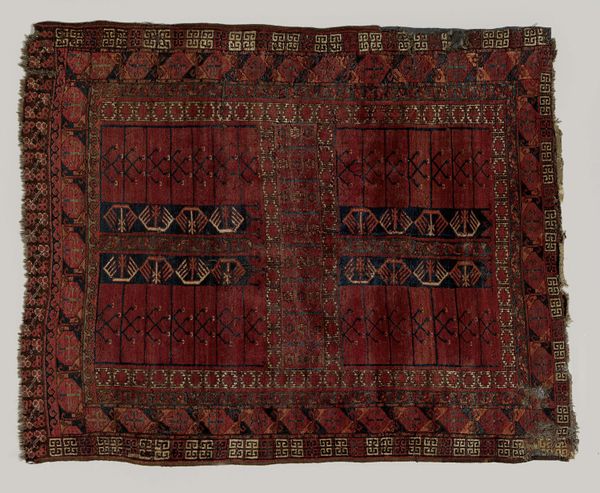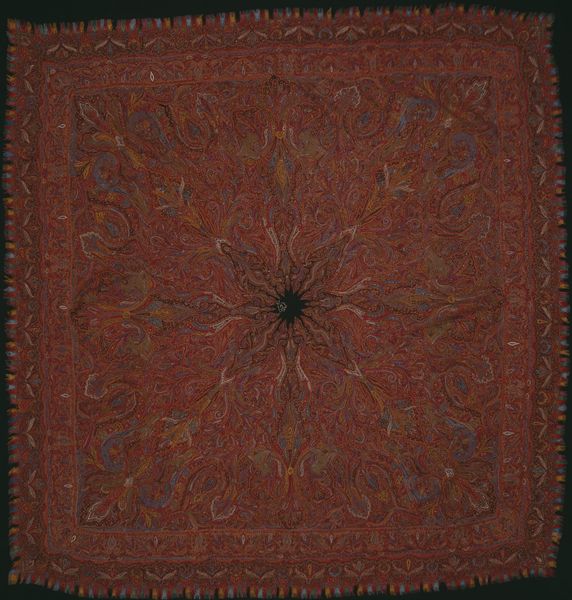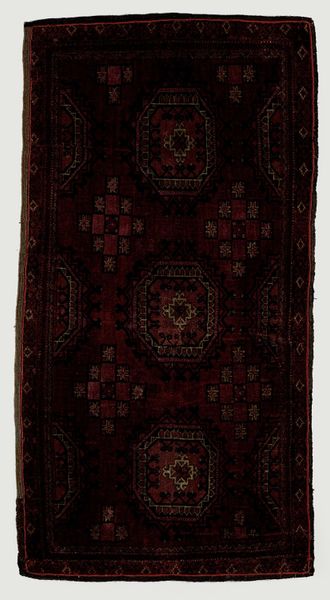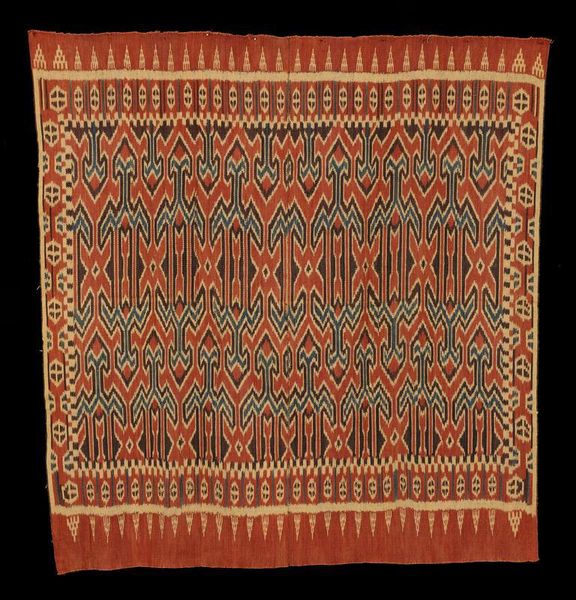
fibre-art, weaving, textile
#
fibre-art
#
weaving
#
textile
#
geometric pattern
#
geometric
#
decorative-art
Dimensions: 56 x 79 in. (142.24 x 200.66 cm)
Copyright: Public Domain
Curator: Looking at this, I’m immediately struck by how grounded it feels. So many shades of earthy reds all overlaid with intricate geometric patterns… It exudes warmth, even tradition. Editor: I agree. Let’s give our listeners some context. This is a "Wedding veil (Odhani)", believed to be from around the 20th century. It comes to us from the Bishnoi Jat community, and is crafted from cotton textiles. A fascinating example of fibre art now residing here at the Minneapolis Institute of Art. Curator: The repetition of the geometric shapes is hypnotic. It makes me think about the weight of tradition, passed down through generations. Does this community have any specific meaning ascribed to geometric patterns? Editor: That’s a fascinating question! Symbols are central to the emotional resonance of any community, aren't they? From the looks of it, the square dominates, enclosed again and again… Squares representing stability and permanence? Curator: Precisely. In the context of a wedding veil, wouldn't those qualities – permanence, stability – reflect societal expectations placed upon the bride? This Odhani could represent far more than simply an article of clothing, perhaps mirroring a restrictive patriarchal ideology. Editor: The shade of red that's dominant is quite intense! Red for passion? For power? Curator: Absolutely, although read through the lens of social constraint, might this supposed ‘power’ translate into expectations for reproductive labor? The bride’s role as a vessel for continuing the family line? Editor: This adds so much nuance to the piece! Seeing it primarily as a ritual object, charged with societal expectations. And what of its decorative quality? Where does it fit within the broader artistic movement of pattern and decoration? It begs questions, not about its utility, but about what is culturally deemed beautiful or valuable. Editor: Considering how this cloth was actually made and who had their hands on it over a lengthy period of construction also illuminates this work, because weaving, sewing, embroidery is women's collective social labor! Curator: It's definitely an incredibly multifaceted object! It provides insights into tradition, identity, the experience of women… It is more than the sum of its cotton fibres. Editor: I agree wholeheartedly. This wedding veil reveals much about our relationship to symbols and what meaning it adds for the viewers. Curator: A deeply textured cultural document, prompting vital conversations about societal roles, labor, and expectations woven into the fabric of a marriage.
Comments
No comments
Be the first to comment and join the conversation on the ultimate creative platform.
